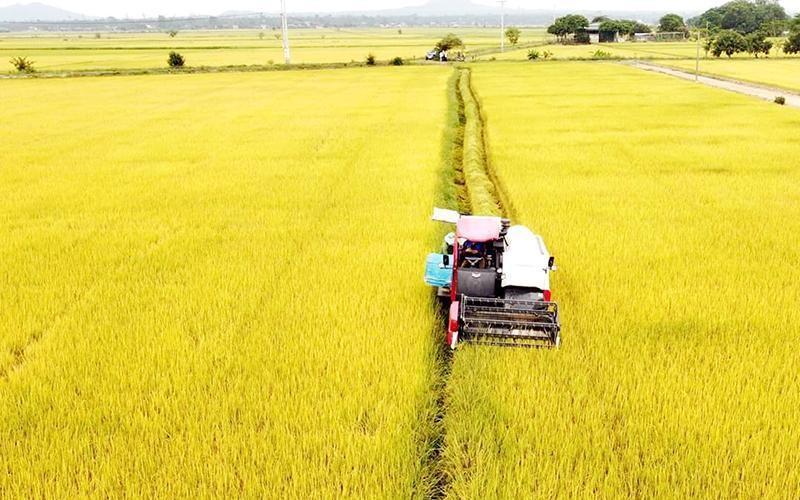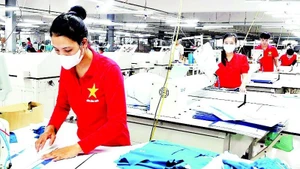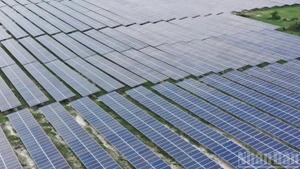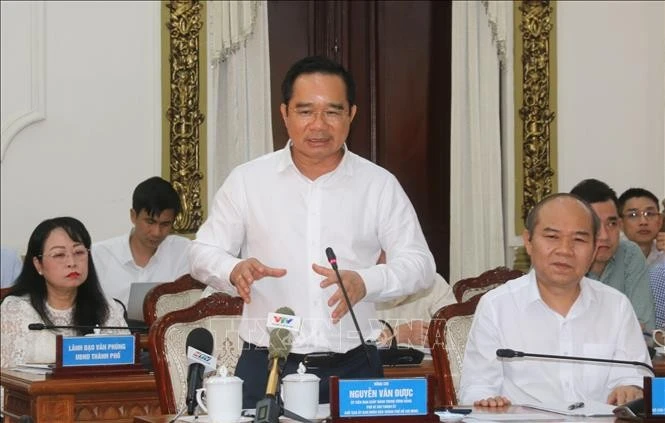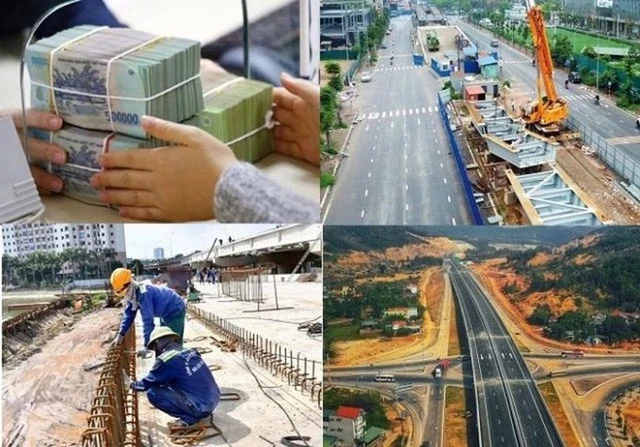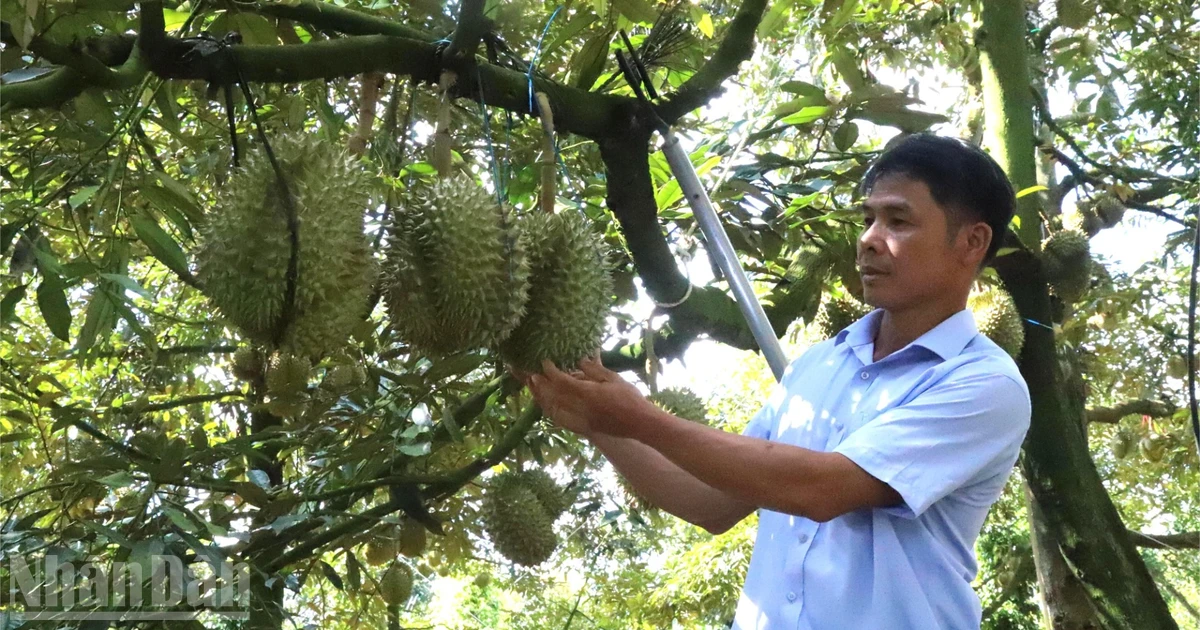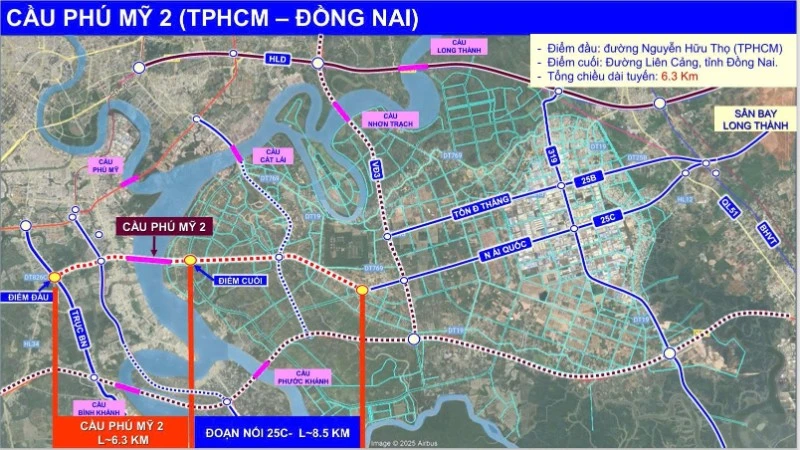Currently, in the Central Highlands, it is not difficult to see farmers applying remote sensor technology to digitise factors such as irrigation water, nutrients, humidity and light and connecting to computers and phones via internet. They can clearly observe the situation on the farm and control some crop care regimes. The application of IoT technology, artificial intelligence, and big data has paved the way for completely new agricultural management activities.
Accelerating the digitalisation of agriculture
In Lam Dong, the birth of Dalat Hasfarm Co., Ltd. has blown a new breath of advanced science and technology into the agricultural industry. Established in 1994, the company's high-grade flower production area covers nearly 320 hectares, producing about 200 million flower stems and 250 million flower tops each year to supply markets around the world.
“The most advanced European floriculture processes, technologies and techniques have been applied on Dalat Hasfarm farms and the process of planting and taking care of flowers is organised and automated," said Dalat Hasfarm Deputy General Director Nguyen Van Bao.
Along with the company's farms, Dalat Hasfarm is currently "shaking hands" with more than 100 farmers and many businesses to form an alliance for the production of freshly cut flower for export, "opening" the secret of flower growing technology to partners to bring profits to "both" while contributing to the development of local smart agriculture.
In the Central Highlands, it is not difficult to see farmers applying remote sensor technology to digitise factors such as irrigation water, nutrients, humidity and light and connecting to computers and phones via internet.
According to Dr. Pham S, Vice Chairman of Lam Dong Provincial People's Committee, the locality currently has 21 businesses that have approached the application of IoT technology, big data, environmental sensors, and automatic greenhouses. The land has formed a class of "new generation" farmers, "smart farmers", who create leisurely but effectively in their farms thanks to the application of smart technology.
In Dak Lak, the "capital" of coffee in the Central Highlands, many coffee farms and gardeners have soon applied smart irrigation technology. The more-than-two-hectares coffee garden of members of Quyet Tien Cooperative (in Cu M'gar District) is installed with a remote control irrigation system via software on mobile phones, which has helped farmers reduce the cost of irrigation and fertiliser application by about 20 million VND per hectare each year.
 |
| Director of Thuy Canh Viet Cooperative (Da Lat City, Lam Dong) checks the sensor system at the farm on a computer. |
Convert numbers in accordance with actual conditions
The Central Highlands has great potential and advantages in terms of land, climatic and soil conditions for the development of large-scale and modern agriculture, towards an agricultural economy. The whole region currently has nearly two million hectares of agricultural land, with key crops including coffee, pepper, cashew, avocado, vegetables, flowers, and fruit trees. Of which, the total area applying high-tech agriculture in the region measures about 200,000 ha.
Dr. Nguyen Duy Thuy, Director of Institute of Social Sciences of Central Highlands, said that in the Central Highlands, the digital transformation in agriculture has been focused by localities. Based on the actual conditions of each locality, the provinces have appropriate digital transformation guidelines.
Gia Lai Provincial People's Committee has promulgated the plan on digital transformation of the province for the period of 2021-2025, with orientation to 2030; in which, agriculture is identified as one of the priority areas for digital transformation. In Dak Lak, the Provincial Party Committee’s Resolution No. 04 on digital transformation, dated April 2, 2021, determines that smart agriculture development is inevitable. Kon Tum Province has also oriented agricultural development towards commodity production and high-tech application in association with processing and consumption markets. Meanwhile, Dak Nong Province has identified agriculture as the foundation and pillar of the economy, and the locality has promoted digital transformation activities in this field.
The initial results of agricultural digitisation in the Central Highlands provinces are the foundation towards modern agriculture.
In Lam Dong, there are currently about 200 hectars applying agricultural production process 4.0, 60 farms applying IoT technology, bringing in revenue from 5 to 8 billion VND per hectare per year; Dak Nong Province has recognised four high-tech agricultural areas, with an area of more than 2,400 hectares; Gia Lai has 41 fruit tree products with planting area codes, and more than 186,000 hectares of crops (accounting for 34% of the province's agricultural production area) produced according to VietGAP, GlobalGAP, 4C, Organic standards; and Dak Lak has more than 20,000 hectares applying hi-tech agriculture, with the agricultural economy accounting for 35% of GRDP and about 90% of the province's total export turnover.
In the Central Highlands, the digital transformation in agriculture has been focused by localities. Based on the actual conditions of each locality, the provinces have appropriate digital transformation guidelines
Dr. Nguyen Duy Thuy
Director of Institute of Social Sciences of Central Highlands
However, digital transformation in agriculture in the Central Highlands is only at the beginning stage. Director of Dak Nong Department of Agriculture and Rural Development Pham Tuan Anh said that the department is coordinating with agencies, units and research institutes to implement a project to build a database for the province's agricultural sector.
In Lam Dong, digital transformation in agriculture has commenced and some initial results have been achieved. In order to achieve good results in agricultural digital transformation, Lam Dong has cooperated and ordered universities and research institutes to develop high-quality human resources; expand international cooperation; continue to have mechanisms and policies to create breakthroughs in smart agriculture with reasonable roadmaps and resources; and attract FDI enterprises in smart agriculture to quickly access modern technology, according to Dr. Pham S, Vice Chairman of Lam Dong Provincial People's Committee.
In recent time, from typical smart agricultural models, provinces in the Central Highlands have gradually spread "digital technology" to all participants in production and business, step by step create a complete digital agricultural ecosystem.
First of all, it is necessary to raise awareness for farmers, businesses and cooperatives so that they can see that new technology will completely change the old one. Next, it is necessary to train and train on digital transformation, because many localities still find it new. It is especially necessary to give priority to training young capable and qualified staff so that they can use and master technology in the future.
Digital conversion must be done step by step, with the right object, depending on the plant species, ecological conditions, soil and climate in each region and each locality, to apply appropriate technology to bring high efficiency, according to Dr. Tran Vinh, Acting Director of Agro-Forestry Science and Technology in the Central Highlands. Digital transformation in agriculture aims to create a digital environment and ecosystem as the foundation, along with creating institutions and promoting the transition from "agricultural production" to "agricultural economy".
Central Highlands provinces are making determined efforts to build a digital transformation strategy suitable to practical conditions, gradually realizing the goal of building the Central Highlands into a national key economic region.
